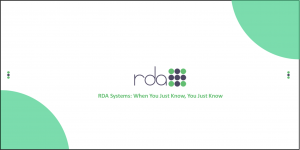Data is an essential asset that plays a significant role in driving growth and success in modern-day organizations. Local governments, school districts, and other organizations that have a clear data strategy are better equipped to leverage data to drive innovation, optimize operations, and improve decision-making.
In this article, we will explore what a data strategy is, how to manage data as an asset, how to create a data governance strategy, ways to build a data-driven culture, and the importance of data-driven decision-making.
What is Data Strategy?
A data strategy is a plan that outlines how an organization will manage its data assets to achieve its objectives. A well-defined data strategy provides clear direction for data management to ensure that data is used effectively to improve decision-making, drive innovation, and optimize operations.
A data strategy also provides a framework for data management that ensures data is accurate, secure, and accessible to authorized personnel.
Data analytics is the process of analyzing and interpreting data to gain insights which inform an organization’s decisions. It involves using statistical and mathematical techniques to extract meaning from data and using visualization tools to communicate insights.
Data analytics can provide valuable insights into constituent behavior, market trends, and administrative operations. This enables organizations to make informed decisions that drive growth and profitability.
Common data analytics techniques include descriptive analytics (which describes past events), predictive analytics (which predicts future events), and prescriptive analytics (which recommends actions to achieve specific outcomes).
How to Manage Data as An Asset
Managing data as an asset involves recognizing the value of data and treating it as a significant resource. It is important to understand the potential of data to drive growth and development in an organization.
A chief data officer (CDO) is responsible for overseeing the management of data assets and ensuring that they are leveraged effectively to drive objectives.
Data professionals (such as data analysts, data scientists, and data engineers) work together with the CDO to manage data and extract insights.
How to Build Your Data Infrastructure
Data infrastructure refers to the underlying technology and architecture that supports the storage, processing, and analysis of data.
The design of data infrastructure plays a critical role in determining how effectively data can be managed and utilized. The design should be scalable, secure, and optimized for the needs of the organization.
With the rise of cloud computing and big data technologies, organizations can leverage emerging technologies to develop advanced data infrastructure which supports their data management needs.
How to Develop a Data Governance Strategy
Data governance is the process of managing the availability, usability, integrity, and security of data used in an organization. A data governance strategy provides a framework for managing data governance, including policies, procedures, and guidelines.
A well-defined data governance strategy is essential for ensuring that data is managed effectively to achieve an organization’s objectives.
Data governance tools (such as data quality management software, data lineage tools, and data cataloging software) can help organizations manage data governance effectively.
How to Create a Data-Driven Digital Transformation Strategy
Digital transformation is a process that involves the integration of digital technologies into all areas of an organization, fundamentally changing how the organization operates.
Digital transformation services can help organizations leverage technology and data to optimize operations, improve decision-making, and drive growth.
Emerging technologies (such as artificial intelligence, the Internet of Things, and machine learning) enable organizations to develop advanced digital transformation strategies that can drive innovation and competitive advantage.
How to Encourage a Data-Driven Culture
Building a data-driven culture involves creating an environment where data is used to inform decision-making and is recognized as a valuable asset.
A data-driven culture encourages employees to use data to support their work and helps build a shared understanding of how data can be leveraged to drive growth and development.
Creating a data-driven culture also involves providing employees with the necessary skills, tools, and resources to use data effectively.
10 steps to creating a data-driven culture:
- Define a clear data strategy
- Develop a data governance framework
- Develop a data infrastructure
- Establish data quality standards
- Develop data analytics capabilities
- Foster cross-functional collaboration
- Provide training on data analytics tools
- Encourage data sharing and transparency
- Reward data-driven decision-making
- Continuously measure and monitor progress
Measuring and monitoring progress involves establishing performance metrics (such as data quality, data usage, and user adoption) and using data analytics tools to regularly evaluate and improve progress against these metrics.
By regularly monitoring progress, organizations can make adjustments to their data strategy and data governance framework, ensuring that they are aligned with their organizational objectives.
How to Ensure Data-Driven Decision-Making
Data-driven decision-making is the process of making organizational decisions based on data analysis and interpretation. It involves collecting, analyzing, and interpreting data to make informed decisions, rather than relying on intuition or experience alone.
By leveraging data analytics, organizations can gain a deeper understanding of their operational and constituent needs, identify new opportunities, and mitigate risks. This approach can lead to improved organizational performance, increased revenues, and better constituent satisfaction.
The data-driven decision-making process involves several steps:
- Define the problem or objective that the organization wants to solve or achieve.
- Collect and analyze data using data analytics tools: This can involve cleaning and preparing the data, exploring and visualizing it, and applying statistical models to gain insights.
- Interpret the results: Draw meaningful insights from the data analysis through translating data insights into actionable recommendations.
- Implement and monitor the decision: This involves tracking performance metrics and continuously evaluating the decision to ensure that it is achieving the desired outcomes.
What’s Your Data Strategy?
In today’s digital age, data is a critical asset for organizations looking to gain a competitive edge. With the vast amount of data available, local governments and school districts can make informed decisions, drive growth, and achieve their objectives.
How have you leveraged data to develop a strategy for your organization?
If you need help creating a data strategy for your organization, feel free to reach out to RDA Systems. Our team is here to help you drive transformation through data strategy.





